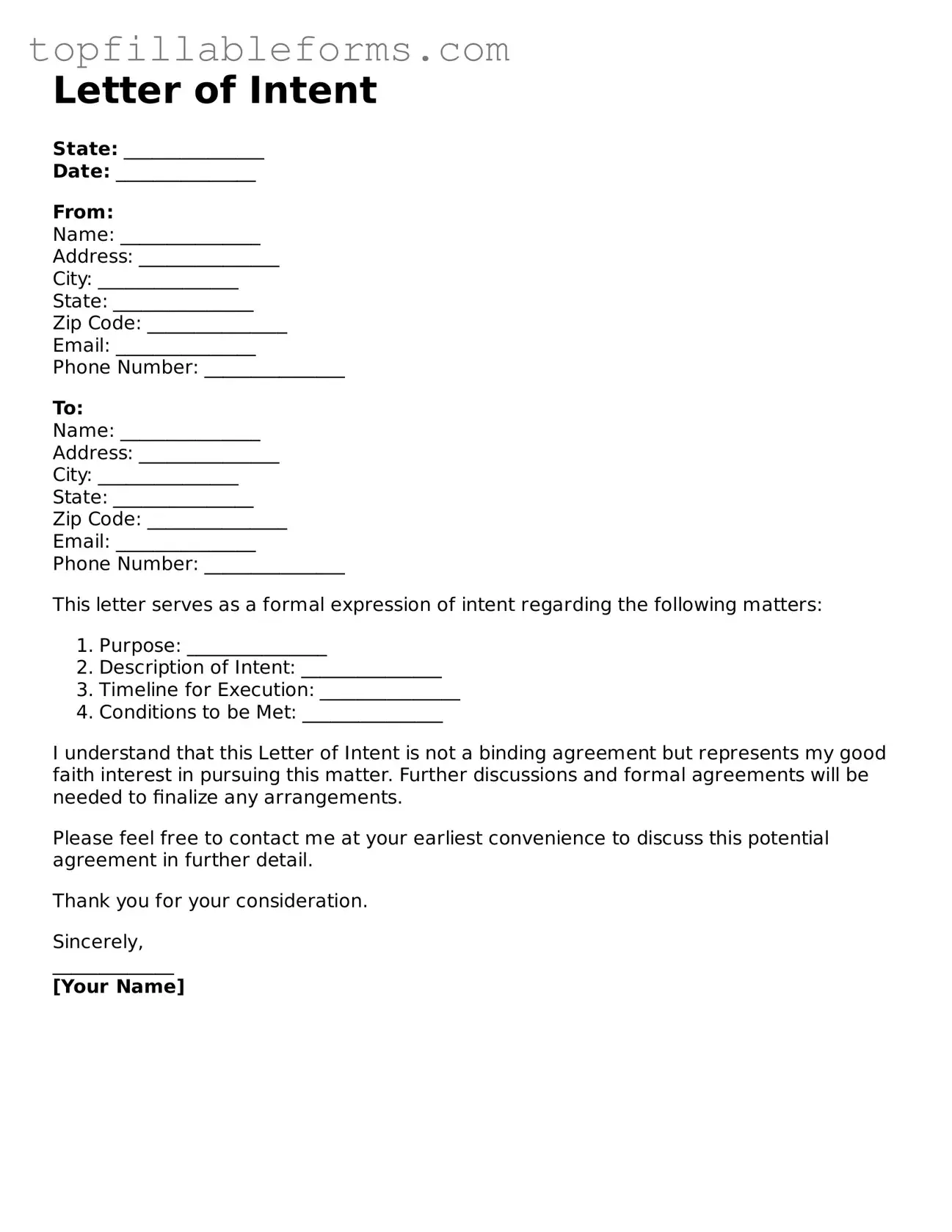Letter of Intent
State: _______________
Date: _______________
From:
Name: _______________
Address: _______________
City: _______________
State: _______________
Zip Code: _______________
Email: _______________
Phone Number: _______________
To:
Name: _______________
Address: _______________
City: _______________
State: _______________
Zip Code: _______________
Email: _______________
Phone Number: _______________
This letter serves as a formal expression of intent regarding the following matters:
- Purpose: _______________
- Description of Intent: _______________
- Timeline for Execution: _______________
- Conditions to be Met: _______________
I understand that this Letter of Intent is not a binding agreement but represents my good faith interest in pursuing this matter. Further discussions and formal agreements will be needed to finalize any arrangements.
Please feel free to contact me at your earliest convenience to discuss this potential agreement in further detail.
Thank you for your consideration.
Sincerely,
_____________
[Your Name]
